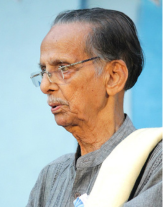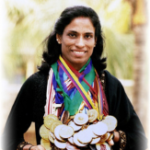Kavalam Narayana Panicker (1928–2016) was a prominent Indian dramatist, poet, and theater director from Kerala, best known for his pioneering contributions to Indian theater. He played a pivotal role in modernizing Malayalam theater while maintaining a deep connection with Kerala’s traditional art forms. His works are noted for their unique blend of classical Indian performance traditions and contemporary sensibilities, making him a revered figure in Indian performing arts.
Early Life and Education
Kavalam Narayana Panicker was born on May 28, 1928, in Kavalam, a village in the Alappuzha district of Kerala, into a family that was deeply rooted in traditional arts and culture. He grew up surrounded by the lush landscape of Kerala’s backwaters, which influenced his deep appreciation for the region’s cultural and folk traditions.
Panicker completed his education in Kerala, obtaining a degree in law from the Government Law College, Thiruvananthapuram. However, his passion for literature, poetry, and theater steered him away from a legal career. He began his artistic journey writing poetry, before turning his focus to the stage and theater, where he would make a lasting impact.
Career in Theater
Kavalam Narayana Panicker is widely regarded as a transformative figure in Malayalam theater, blending traditional forms with contemporary theatrical practices. He founded the Sopanam Institute of Performing Arts and Research, where he worked extensively on creating a new theater idiom rooted in Indian aesthetics. His aim was to reinterpret Western theater traditions using the principles and aesthetics of Indian classical performing arts, especially those of Kerala.
Key Innovations in Theater:
- Integration of Folk and Classical Forms: Panicker was instrumental in incorporating Kerala’s traditional art forms, such as Kathakali, Kutiyattam, Ottamthullal, and Theyyam, into modern theater. His plays often utilized the body language, gestures, music, and rhythm of these forms, making his productions visually and aurally distinct.
- Theater Music: A trained singer himself, Panicker placed a special emphasis on the musicality of his plays. He revived the use of traditional musical instruments and native rhythms, creating an immersive theatrical experience that was deeply connected to Kerala’s cultural roots.
- Language and Dialogue: Panicker’s command over the Malayalam language and his poetic flair allowed him to craft dialogues that were not only powerful but also rhythmic and lyrical. He worked towards revitalizing the beauty of spoken Malayalam, and his plays were often appreciated for their rich linguistic texture.
Major Works:
- “Avanavan Kadamba” (1974): One of Panicker’s most famous plays, “Avanavan Kadamba” is a satirical take on contemporary social and political issues. It is set in a rural environment and uses folk theater techniques to depict a story of power struggles and societal dynamics. The play is known for its innovative use of music and movement, blending folk traditions with a modern narrative.
- “Sakshi”: Another major work by Panicker, “Sakshi” is an intense exploration of the human condition, using a minimalist approach in terms of stagecraft but employing powerful acting and traditional performance techniques.
- “Ottayan”: This play is a critique of modern materialism and consumer culture, once again using traditional forms to present a contemporary issue. The protagonist’s existential struggle is mirrored in the stylized performance traditions of Kerala.
- “Kalivesham”: In this play, Panicker explores the cultural identity of Kerala and the role of traditional art forms in preserving this identity. The play uses Kathakali and other traditional dance forms as central elements of the narrative.
- “Daivathar”: One of Panicker’s landmark plays, it is based on the traditional Theyyam ritual of Kerala. The play explores the deep connections between myth, culture, and the human psyche, using the Theyyam form to present a powerful theatrical experience.
Contribution to Kutiyattam
Kutiyattam, the ancient Sanskrit theater form of Kerala, received Panicker’s special attention. He was involved in the revival and popularization of this UNESCO-recognized art form by modernizing it without losing its core traditional elements. Panicker collaborated with Ammannur Madhava Chakyar, one of the foremost practitioners of Kutiyattam, to present the art form in contemporary contexts and on modern stages.


